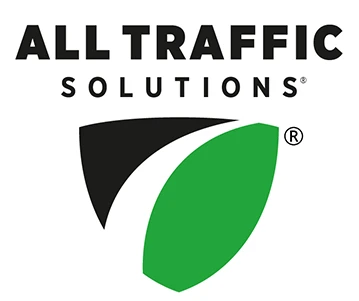Smart sign solutions are a Flourishing area. Louise Smyth catches up on the latest product, contract and application news from some progressive players in the VMS market…
When speaking with suppliers in the variable message sign (VMS) sector, it is interesting to note how various geographic markets deploy these solutions. In North America, there is a growing trend for using these signs to go beyond providing only regular traveler information (‘Delays for Five miles’, etc) and to utilize them as part of driver education campaigns, enforcement programs, and more. The European market, meanwhile, tends to focus more on standardizing the types of messages and pictograms that are displayed as well as how they are displayed – a less ‘creative’ approach, perhaps, but one that certainly benefts drivers on the road by working to ensure the signs do not prove to be more distracting than they are helpful.
“I think in the UK we have a little more discipline than some regions,” says a forthright Roger Stainforth, VMS Limited’s deputy chairman. “Some of the alerts that appear on portable VMS are not approved messages, for instance, and can be misleading to drivers. We’ve made portable VMS for the past 20 years, but when they are used on the British motorway and trunk road network they are governed by comprehensive guidance laid down by the UK’s traffic authorities. However, elsewhere, you often see a scenario where the operator who gets his hands on the keyboard more or less sets whatever messages he wants.”
So how are VMS Limited products being used in the UK? “We’ve been working extensively in conjunction with the Highways Agency on the implementation of the M42 Active Traffic Management scheme and other managed motorways schemes around the English network,” Stainforth explains. “We’re also pleased to have recently been awarded the contract as a supplier of signs – both static and mobile – for the Welsh Assembly government. This will see our MS4 signs (high-resolution, dual color units for displaying text and pictograms) being rolled out across the Welsh road network in an ongoing four- year contract.”
Although both of the above mentioned contracts are for traditional highway VMS, used to display traditional traffic information, this is not to say that Stainforth discourages more innovative deployments of this technology. “We’re seeing a rising demand for other, non-motorway applications – in urban areas, for example,” he says. “In 2009 we were awarded a five- year contract for several types of signs in the West Midlands, conducting tasks such as car park guidance and providing city center driver information.”
VMS Limited is also becoming more involved in tunnel management, where its products are used for lane control, variable speed limits, tunnel message signs, and portal signs. The company is currently working on both the Hindhead and Hatfield tunnels in the south of England. The Hatfield tunnel may eventually have 36 VMS Limited signs of various types, while the Hindhead tunnel will have around 100.
MOBILE APPLICATION
One company that is working on a number of diverse applications – and that takes pride in its signs being used for less usual purposes – is the Pennsylvania-based All Traffic Solutions. The company was founded 10 years ago and has been working in the traffic market for the past seven years, concentrating primarily on mobile signage solutions. “We haven’t focused on the conventional types of products, the massive VMS that are switched off for much of the time and have limited use,” says one of the company’s founders, Scott Johnson. The strategy is paying off, particularly in the current economic climate: “Right now, every tax dollar being spent has to work harder. If you’re buying equipment you can only use 10% of the time, it’s a false economy. With our product line you can mix and match the different signs – you make a VMS talk to a radar speed display, and put them both on a trailer together. Or you can split them apart and have one across town at the community fair, while the other one is calming traffic as the surge is coming into town. We offer something that’s easier to use, so it gets used more often. This demand for greater usefulness from the same or less capital expenditures is helping drive our popularity domestically and internationally,” he states.
One recent contract aptly illustrates the flexibility of All Traffic Solutions products. The company has sold 38 VMS trailer units to the state of Rhode Island. “They purchased the full suite of products – VMS on trailers, working with our radar speed display,” Johnson explains. “They are using them for a federally sponsored program that’s being administered by the state, but rather than limiting the equipment to be used only toward the state’s program for highway safety and driving under the influence (DUI) enforcement, they’ve deployed and granted the equipment to the individual municipalities in the state. These guys will be out there on the street with these signs all year long – so those tax dollars are at work the whole time.”
The program to which he refers involves the signs being used to display messages alerting drivers to the state’s crackdown on DUI, meaning the VMS are effectively used to advertise the fact that the state is taking this problem seriously. The radar speed signs also fit into this ethos of using traffic technology to educate and (it is hoped) influence driver behavior in a bid to improve road safety. “One of the reasons our radar speed displays are effective is because people sometimes just aren’t aware that they’re going so fast,” Johnson says. “Awareness has a huge impact in programs such as this.”
Moving beyond awareness and actually incorporating signs into enforcement is an area that interests Johnson: “We’re extending our ongoing innovation not only in terms of the hard product – although we do have something in the pipeline – but also focusing on how people are using our equipment. There’s an increasing interest in video complementing the speed data. Europe is years ahead of the USA in terms of utilizing imaging for enforcement but that is starting to gather pace here, so we’re looking at better ways to take the information we’re gathering with the radar speed displays and aligning it with an imaging product so that it becomes a more useful tool.”
GETTING THE MESSAGE
Also heavily active in the North American market is the South Dakota-based company, Daktronics. The company is noting a surge of interest in its Vanguard VMS, which it believes offers an advantage to drivers on the road: “Full-color, graphical VMS technology such as the Vanguard can improve motorist reaction time by displaying high-resolution standard traffic symbols,” explains Mike Weinberg, Daktronics Vanguard product manager. “We designed all Vanguard VMS to give customers a choice between amber and full color with high-resolution pixel pitches. This increasing demand from the industry is a leading indicator for the use of high-resolution, full-color signage to help improve traffic management.”
In September 2009, West Virginia Division of Highways (WVDOH) installed three amber and 12 full-color Vanguard units to manage traffic applications. “The high-resolution 20mm pixel pitch allows them to create graphics to enhance AMBER Alert information – they can even display photos,” Weinberg says. “WVDOH will also display logos and other graphics for event and incident management.”
In April 2009, Michigan DOT activated 28 high-resolution, front-access Vanguard VMS to replace aging toll displays on Blue Water Bridge, connecting the USA and Canada in Port Huron, Michigan. Of the 28 units, five are full color and the rest are monochrome. MDOT is using the signs to display messages regarding payment types and lane management.
According to Weinberg, Daktronics is seeing a rising demand for full-color graphics on VMS that are used in mission- critical applications where legibility is crucial. “In October 2009, Caltrans District 6 installed four full-color Vanguard VMS on SR 99 in California’s Central Valley to alert motorists of fast-encroaching Tule fog. The VMS use bright, attention-grabbing warning messages, and they are part of an integrated system that includes traffic sensors, visibility sensors, and CCTV cameras.”
In addition to its large full-color projects, Daktronics launched a new product in 2009 called the Dedicated Dynamic Message Sign (DDMS), specifically for travel time and variable toll/congestion pricing applications. “The DDMS allows agencies to use a product that’s both cost-effective and full-featured to display travel times and toll rates,” Weinberg reveals. “We located its critical components on the ground for simple maintenance without bucket trucks and for easy installation of the lightweight sign panels. In the next few years, I think we’re going to see more agencies adopt the DDMS as well as full-color VMS for applications such as individual lane management.”
Article Reproduced with permission from Traffic Technology International.
Direct all media inquiries to:
Lori Miles
All Traffic Solutions Marketing Manager
Calder Square, PO Box 10085
State College, PA 16805-0085
814-237-9005 Ext. 205
lmiles@alltrafficsolutions.com




